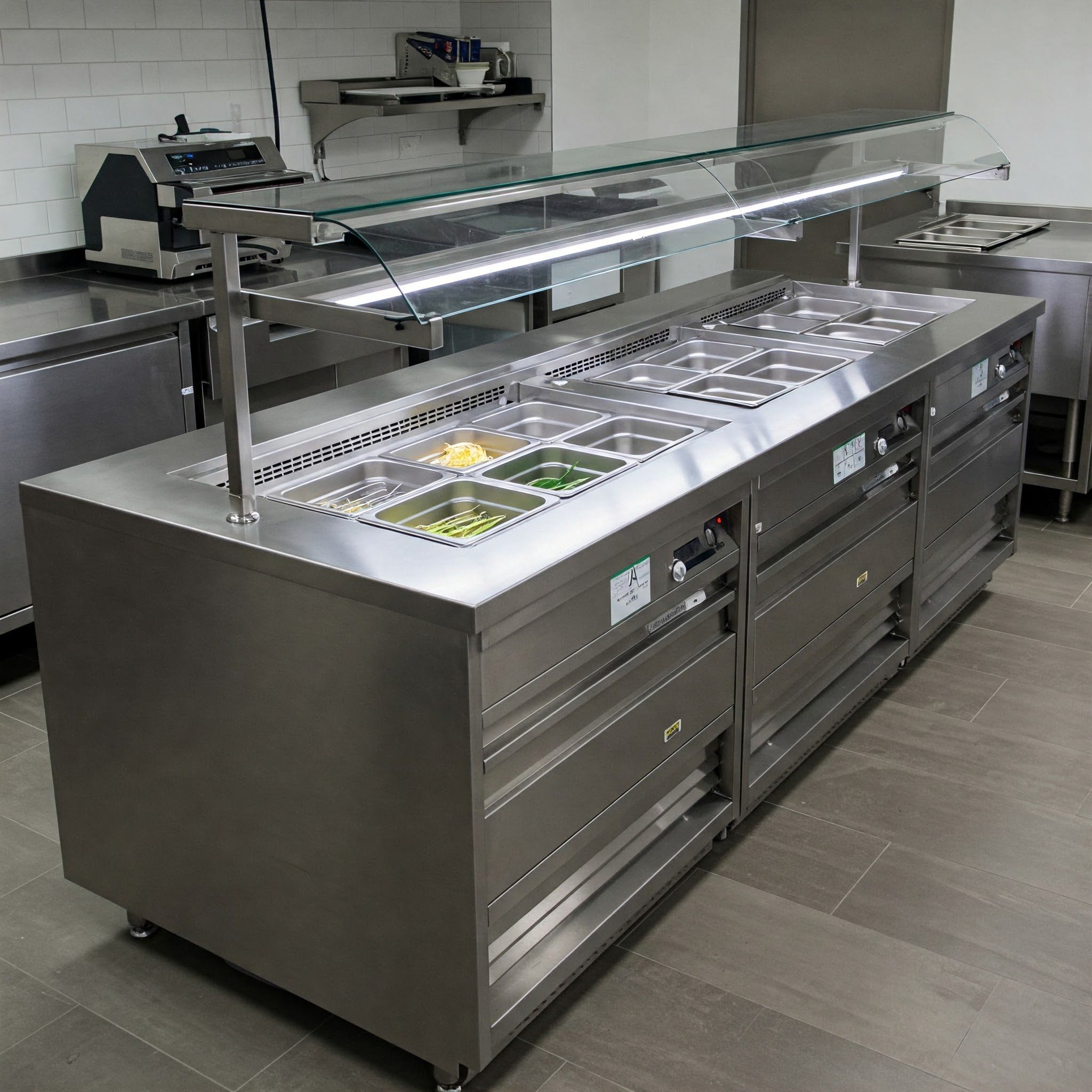Prep Counters: The Essential Equipment for Streamlined Food Preparation
Prep counters are vital in commercial kitchens, combining refrigerated storage and work surfaces to optimize food preparation. Ideal for restaurants, cafes, and catering businesses, these versatile units help maintain food safety and improve kitchen efficiency.
What Are Prep Counters?
Prep counters, also known as prep tables, are multi-functional kitchen appliances that feature a refrigerated base and a worktop. These counters provide storage for ingredients and a hygienic workspace for preparing food, ensuring that everything needed for food prep is within arm’s reach.
Key Features of Prep Counters
- Refrigerated Base
- Maintains consistent temperatures to store perishable ingredients.
- Spacious Worktop
- Provides a sturdy surface for chopping, assembling, and preparing dishes.
- GN Compatibility
- Many models are designed to hold Gastronorm (GN) pans for easy organization.
- Temperature Control
- Digital thermostats for precise temperature settings.
- Hygienic Design
- Easy-to-clean surfaces made of stainless steel or other food-safe materials.
- Storage Options
- Drawers, cabinets, or shelves for storing tools and ingredients.
- Mobility
- Some models come with wheels for easy repositioning.
- Energy Efficiency
- Insulated design to reduce energy consumption.
Types of Prep Counters
1. Salad Prep Counters
- Purpose: Ideal for preparing salads, sandwiches, and wraps.
- Features:
- Shallow refrigerated compartments for vegetables and toppings.
- Wide worktops for assembling dishes.
2. Pizza Prep Counters
- Purpose: Designed for pizza assembly and preparation.
- Features:
- Spacious worktops for rolling dough and topping pizzas.
- Refrigerated compartments for storing sauces, cheese, and toppings.
3. Meat Prep Counters
- Purpose: Suitable for cutting and processing meat.
- Features:
- Durable worktops resistant to knives and heavy-duty use.
- Temperature-controlled storage to preserve freshness.
4. General Purpose Prep Counters
- Purpose: Versatile units for various food preparation tasks.
- Features:
- Customizable storage options and worktop sizes.
- Available in single, double, or triple-door configurations.
Applications of Prep Counters
- Restaurants and Cafes
- Streamline the preparation of salads, sandwiches, and main courses.
- Pizzerias
- Perfect for assembling pizzas quickly and efficiently.
- Catering Services
- Enhance efficiency during events by organizing ingredients and tools.
- Bakeries
- Use refrigerated storage for dough, fillings, and toppings.
- Food Trucks
- Compact prep counters for mobile food preparation.
Benefits of Using Prep Counters
- Improved Efficiency
- Combines storage and workspace, reducing time spent moving between equipment.
- Enhanced Food Safety
- Keeps ingredients at safe temperatures, minimizing the risk of spoilage.
- Space Optimization
- Maximizes kitchen space by combining multiple functions into one unit.
- Organized Workflow
- Keeps tools and ingredients easily accessible for faster preparation.
- Customizable Options
- Available in various sizes and configurations to fit specific kitchen needs.
- Durable and Reliable
- Built to withstand the demands of busy commercial kitchens.
Choosing the Right Prep Counter
- Size and Capacity
- Assess your kitchen space and storage requirements to choose the appropriate size.
- Worktop Material
- Opt for stainless steel for durability, hygiene, and easy cleaning.
- Refrigeration Type
- Decide between self-contained or remote refrigeration systems.
- Storage Configuration
- Choose between drawers, cabinets, or a combination for storing ingredients and tools.
- Energy Efficiency
- Look for models with energy-saving features to reduce operating costs.
- Additional Features
- Consider units with splashbacks, cutting boards, or integrated sinks.
Maintenance Tips for Prep Counters
Daily Maintenance
- Clean the Worktop: Wipe down the surface after each shift to maintain hygiene.
- Check Refrigeration: Ensure temperatures are consistent and within safe ranges.
Weekly Maintenance
- Inspect Gaskets: Check door seals for wear and tear to prevent cold air leaks.
- Organize Storage: Reorganize ingredients and tools to ensure proper airflow.
Monthly Maintenance
- Defrost the Unit: Remove ice buildup in refrigerated compartments if necessary.
- Clean Condenser Coils: Remove dust and debris to improve cooling efficiency.
Annual Maintenance
- Professional Inspection: Schedule a technician to inspect and service the refrigeration system.
- Replace Worn Parts: Replace damaged gaskets, hinges, or other components.
Troubleshooting Common Issues
- Inconsistent Cooling
- Cause: Blocked vents, overloading, or a faulty thermostat.
- Solution: Clear vents, reduce load, and calibrate or replace the thermostat.
- Excessive Noise
- Cause: Loose components or issues with the compressor.
- Solution: Tighten parts and consult a technician for compressor problems.
- Frost Build-Up
- Cause: Frequent door openings or high humidity.
- Solution: Limit door usage and defrost regularly.
- Leaking Water
- Cause: Blocked drainage or condensation.
- Solution: Unclog the drain and ensure proper ventilation.
- Worktop Damage
- Cause: Heavy usage or improper cleaning methods.
- Solution: Use cutting boards and clean with non-abrasive materials.


